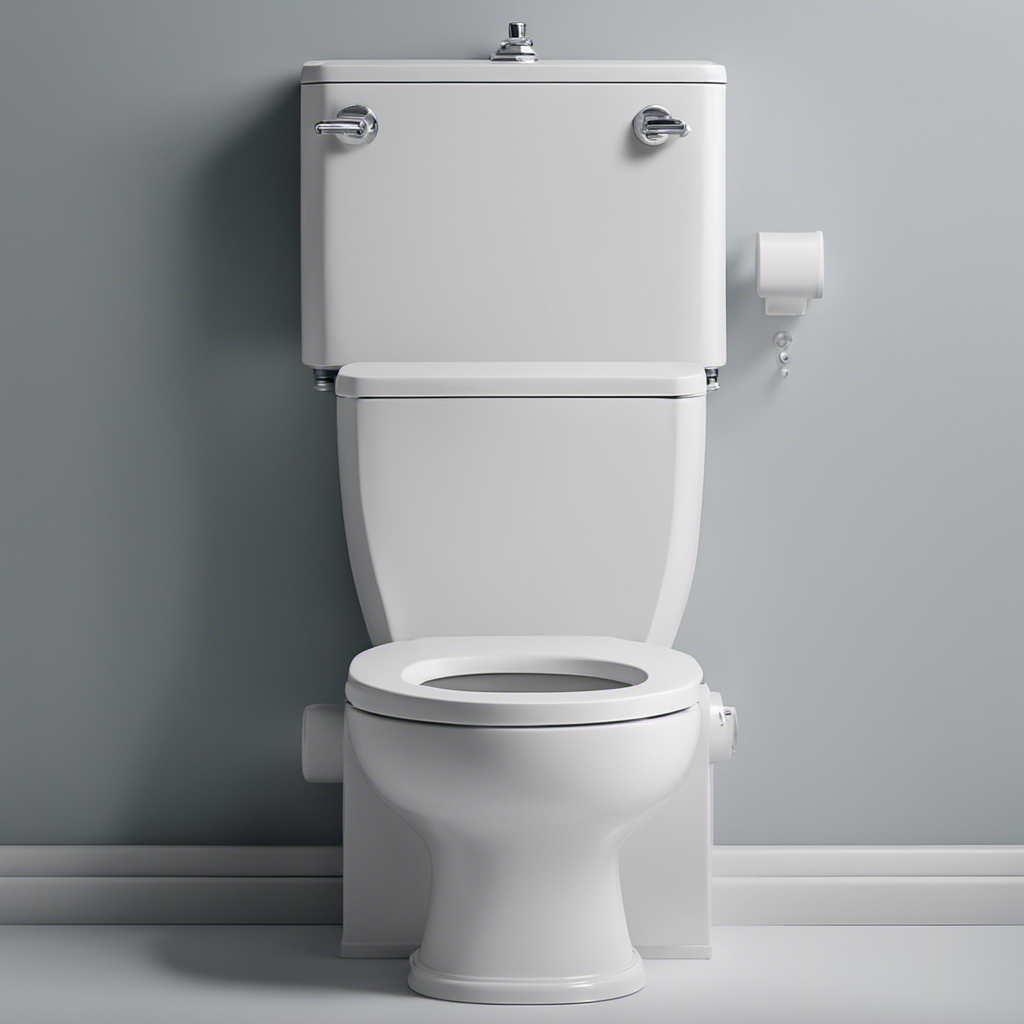Hey there!
Ever had the frustrating experience of a leaking toilet tank? I know I have, and let me tell you, it’s not a pleasant situation.
But fear not, because in this article, I’m going to show you how to fix that pesky problem with your toilet tank flapper.
With just a few simple steps and some basic tools, you’ll be able to stop that annoying leak in no time.
So, let’s get started and put an end to that never-ending drip!
Key Takeaways
- Leaking toilet tank flapper can be caused by a worn-out or damaged flapper valve.
- Misaligned or improperly installed flapper can also lead to leaks.
- Faulty flush valve assembly might be the underlying issue.
- Regularly check for signs of wear and tear and adjust the flapper chain if necessary to ensure a proper seal.
Identifying the Problem
The first step in fixing a leaking toilet tank flapper is identifying where the leak is coming from. There are several common causes for a leaking toilet tank flapper, including a worn-out or damaged flapper valve, a misaligned or improperly installed flapper, or a faulty flush valve assembly.
To troubleshoot the issue, start by inspecting the flapper for any visible signs of wear or damage, such as cracks or tears. Next, check the alignment and installation of the flapper to ensure it is properly seated on the flush valve. If the flapper appears to be in good condition and properly aligned, the issue may lie with the flush valve assembly, which may need to be repaired or replaced.
Gathering the Necessary Tools
First, you’ll need to gather all the necessary tools for the task at hand. Fixing a leaking toilet tank flapper requires a few key items.
Firstly, you’ll need an adjustable wrench to disconnect the water supply line from the toilet tank.
Next, grab a pair of pliers to remove the old flapper and install the new one.
Additionally, a sponge or towel will come in handy to soak up any water that may spill during the process.
Now that you have your tools ready, let’s address the common causes of toilet tank flapper leaks.
The most common culprit is a worn or damaged flapper. It can also be caused by a misaligned or loose flapper chain.
To maintain a leak-free toilet tank flapper, make sure to regularly check for any signs of wear and tear. Adjust the flapper chain if necessary to ensure a proper seal.
Removing the Old Flapper
To remove the old flapper, you’ll need to disconnect the water supply line from the toilet tank using an adjustable wrench. This step is crucial in repairing a toilet and troubleshooting common toilet problems.
Here’s a step-by-step guide to help you with the process:
-
Start by turning off the water supply valve located behind the toilet.
-
Use the adjustable wrench to loosen the nut connecting the water supply line to the toilet tank.
-
Once the nut is loose, carefully pull the water supply line away from the tank.
-
Next, locate the flapper chain attached to the flush lever inside the tank.
-
Disconnect the flapper chain from the flush lever by unhooking it.
Installing the New Flapper
Once you have disconnected the water supply line and removed the old flapper, it’s time to install the new flapper.
To ensure a leak-free toilet tank, proper installation is crucial. Start by placing the new flapper onto the flush valve opening, ensuring it fits securely. Make sure the chain is properly attached to the flush lever, allowing for proper movement. Adjust the chain length if necessary to ensure the flapper closes completely after each flush.
Once installed, turn on the water supply and let the tank fill. Check for any leaks around the flapper and flush the toilet to see if it operates smoothly.
Troubleshooting common toilet tank issues and maintaining a leak-free flapper are essential for a functional bathroom. With the new flapper in place, it’s time to test for leaks and ensure everything is working properly.
Testing for Leaks
Now that you have installed the new flapper, it’s time to check for any leaks in the toilet tank. To ensure that your toilet is functioning properly, follow these steps:
- Flush the toilet and wait for the tank to refill.
- Add a few drops of food coloring into the tank.
- Wait for about 10 minutes without flushing.
- Inspect the toilet bowl for any signs of colored water.
- If you see colored water in the bowl, there is a leak.
Troubleshooting common toilet tank issues is essential for maintaining a properly functioning bathroom. DIY solutions for toilet maintenance can save you money and prevent further damage. By testing for leaks, you can identify any issues and take the necessary steps to fix them.
Don’t ignore the warning signs – tackle the problem head-on to ensure a leak-free toilet tank.
Conclusion
So there you have it, folks! Fixing a leaking toilet tank flapper is a relatively simple task that can save you money and prevent water waste.
By following the steps outlined in this article, you can easily identify the problem, gather the necessary tools, remove the old flapper, install a new one, and test for leaks.
Remember, a small leak now can turn into a big problem later, so don’t delay in taking action.
Happy fixing!










